

Extreme Precipitation Increase
Global warming leads to an increase in both ocean evaporation into the atmosphere and the amount of water vapor the atmosphere can hold when fully saturated. Warmer air, holding more moisture creates conditions more favorable for extreme precipitation in the form of intense rain and snow storms.
Read More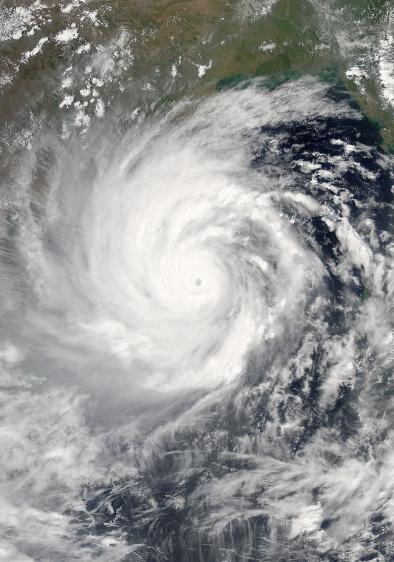

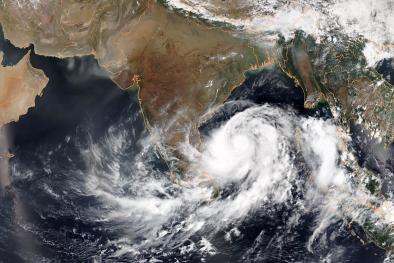

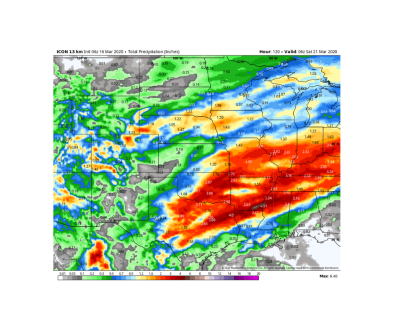

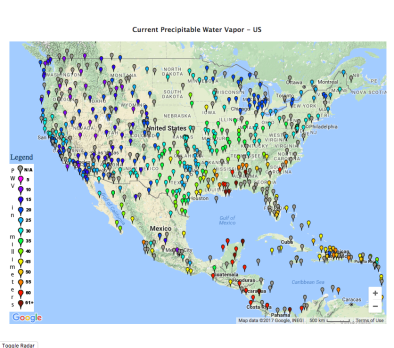
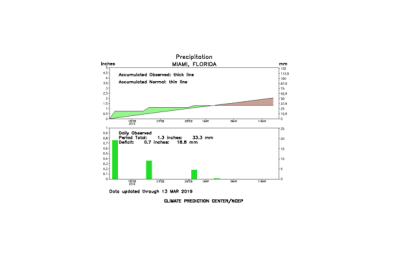
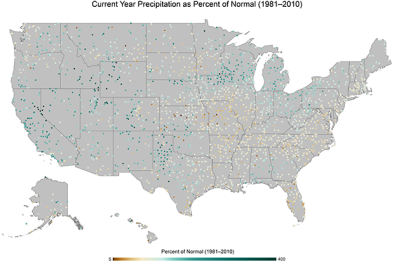
Climate science at a glance
- The number of record-breaking extreme precipitation events globally has significantly increased in recent decades, and the fingerprint of global warming has been documented in this pattern.
- After heat waves, the increasingly heavy downpours seen around the world and in the United States are some of the clearest impacts of climate change on extreme weather.
- An increase in rainfall rates is one of the more confident predictions of the effects of climate change on storms.[1]
- Just as a bigger bucket can hold and dump more water, a warmer atmosphere can hold more water vapor and therefore dump more water when it rains.
Background information
Warmer air increases precipitation extremes because it can hold more water
Warmer air holds more water because the water vapor molecules it contains are moving at a higher average speed than those in colder air making them less likely to condense back to liquid. According to the Clausius–Clapeyron equation, for each 1°C of warming, saturated air contains 7 percent more water vapor, which may rain out if conditions are right.[2] The average moisture content of the atmosphere has increased by about 4 percent since the 1970s, as expected from the Clausius–Clapeyron law.[3]
Storms reach out and gather water vapor over regions that are 10-25 times as large as the precipitation area, thus multiplying the effect of increased atmospheric moisture.[4] As water vapor condenses to form clouds and rain, the conversion releases heat that add buoyancy to the air and further fuels the storm.[5] This increases the gathering of moisture into storm clouds and further intensifies precipitation.[4]
The northern hemisphere is tending toward increasingly warmer and more humid summers, and the global area covered by extreme water vapor is increasing significantly, increasing the limit for extreme precipitation.[6]
Storms are fueled by available heat. Increasing surface land and ocean temperatures are increasing the potential energy available to passing storms.[2]
US extreme precipitation trends and climate change
- According to the US Fourth National Climate Assessment, "Heavy precipitation events [defined as the heaviest 1 percent of all daily events] in most parts of the United States have increased in both intensity and frequency since 1901."[7]
- From 1958 to 2016, the amount of precipitation falling in very heavy events (the top 1% of all daily precipitation events) increased by 55 percent in the Northeast, 27 percent in the Southeast, 42 percent in the Midwest, 29 percent in the Northern Great Plains, 12 percent in the Southern Great Plains, 10 percent in the Southwest, and 9 percent in the Northwest.[7]
- Over the period from 1994-2008, extreme precipitation events linked to hurricanes accounted for 32 percent of extreme precipitation increases in the Northeast, 51 percent in the Central US, 48 percent in the South, and 100 percent in the Southeast (for regions, see here).[8]
- The heaviest rainfall events have become more frequent across most of the country, and projects that heavy precipitation events that historically occurred once in 20 years will occur as frequently as every 5 to 15 years by late this century.[9]
- In the past century, the US has witnessed a 20 percent increase in the amount of precipitation falling in the heaviest downpours.[10]
US studies attribute extreme precipitation to climate change
- (Trenberth et al. 2018), (Wang et al. 2018), (Risser and Wehner 2017), (Van Oldenborgh et al. 2017), and (Emanuel 2017): Five attribution studies have found that global warming added to the deluge of rainfall dumped by Hurricane Harvey.[11][12][13][14][15]
- (Huang et al. 2018): Historical warming increased runoff by over one third during the period of heaviest precipitation in February 2017 that led to the Oroville Dam spillway overflow in California.[16]
- (Wang et al. 2018): Data shows a likely effect of anthropogenic warming on the December 2015 extreme precipitation event in Missouri.[17]
- (Van der Wiel et al. 2017) and (Wang et al. 2016): Climate change increased the likelihood of the extreme three day precipitation observed in South Louisiana from August 12 to 14, 2016. Warming since 1985 may have increased precipitation on the order of 20 percent.[18][19]
- (Trenberth et al. 2015): During "Snowmaggedon" in February 2010, high sea surface temperatures linked to human caused global warming fed moisture into the storm, helping it to intensify and causing heavy precipitation.[20]
- (Knutson et al. 2014): Seasonal and annual mean precipitation extremes occurring during 2013 in north-central and eastern US regions were attributable to anthropogenic and natural forcings combined.[21]
- (Trenberth et al. 2007): Analysis of the impact of climate change on Hurricanes Katrina and Ivan indicates that increased sea surface temperatures and water vapor related to human influences on climate since 1970 increased associated storm rainfalls by around 6 to 8 percent.[22]
Global extreme precipitation trends and climate change
- The 5th Assessment Report of the Intergovernmental Panel on Climate Change states: It is likely that since about 1950 the number of heavy precipitation events over land has increased in more regions than it has decreased. Confidence is highest for North America and Europe where there have been likely increases in either the frequency or intensity of heavy precipitation with some seasonal and regional variations. It is very likely that there have been trends towards heavier precipitation events in central North America.[23]
- Global analyses show that specific humidity, which measures the amount of water vapor in the atmosphere, has increased over both the land and the oceans.[23]
- During the past 25 years, satellites have measured a 4 percent rise in atmospheric water vapor that is in line with the basic physics of a warming world and computer modeling of our current climate.[24][25]
Global studies attribute extreme precipitation to climate change
- (Knutson and Zeng 2018): The influence of human-caused climate change is detectable for over 20 percent (9 percent) off well-observed global land regions where precipitation has increased (decreased).[26]
- (Diffenbaugh et al. 2017): An April 2017 study found that, from 1961 to 2010, global warming increased the likelihood of occurrence of the wettest five-day periods on record in 41 percent of the observed areas of the world.[27]
- (Lehmann et al. 2015) and (Fischer and Knutti 2015): The number of record-breaking rainfall events globally has significantly increased in recent decades, and the fingerprint of global warming has been documented in this pattern.[28][29]
- (Fischer and Knutti 2015): About 18 percent of the "moderate" (i.e. 1-in-3 year) daily precipitation extremes over land are attributable to warming, while a much larger share of very extreme events is attributed to warming.[29]
… nearly a fifth of precipitation extremes can be attributed to global warming. Not one of these events is solely the direct result of warming, but warming increases their frequency. And the less common and more extreme the...heavy rainfall event, the more this can be attributed to a man-made contribution.
Dr. Erich Fischer, ETH Zürich[30]
- (Fischer and Knutti 2014): There is a distinct intensification of heavy precipitation events and hot extremes at local scales. Observed local trends across the globe for the period 1960–2010 are clearly different to what would be expected from internal variability. [31]
- (Zhang et al. 2013) detect the effect of anthropogenic forcings in extreme precipitation observations in the northern hemisphere. They estimate that human influence has intensified annual maximum 1 day precipitation in sampled Northern Hemisphere locations by 3.3 percent on average.[32]
- (Min et al. 2011) show that human-induced increases in greenhouse gases have contributed to the observed intensification of heavy precipitation events found over approximately two-thirds of data-covered parts of Northern Hemisphere land areas.[33]
- (Min et al. 2008): Decisively detects anthropogenic signals in extreme precipitation changes in global, hemispheric, and zonal band areas.[34]









